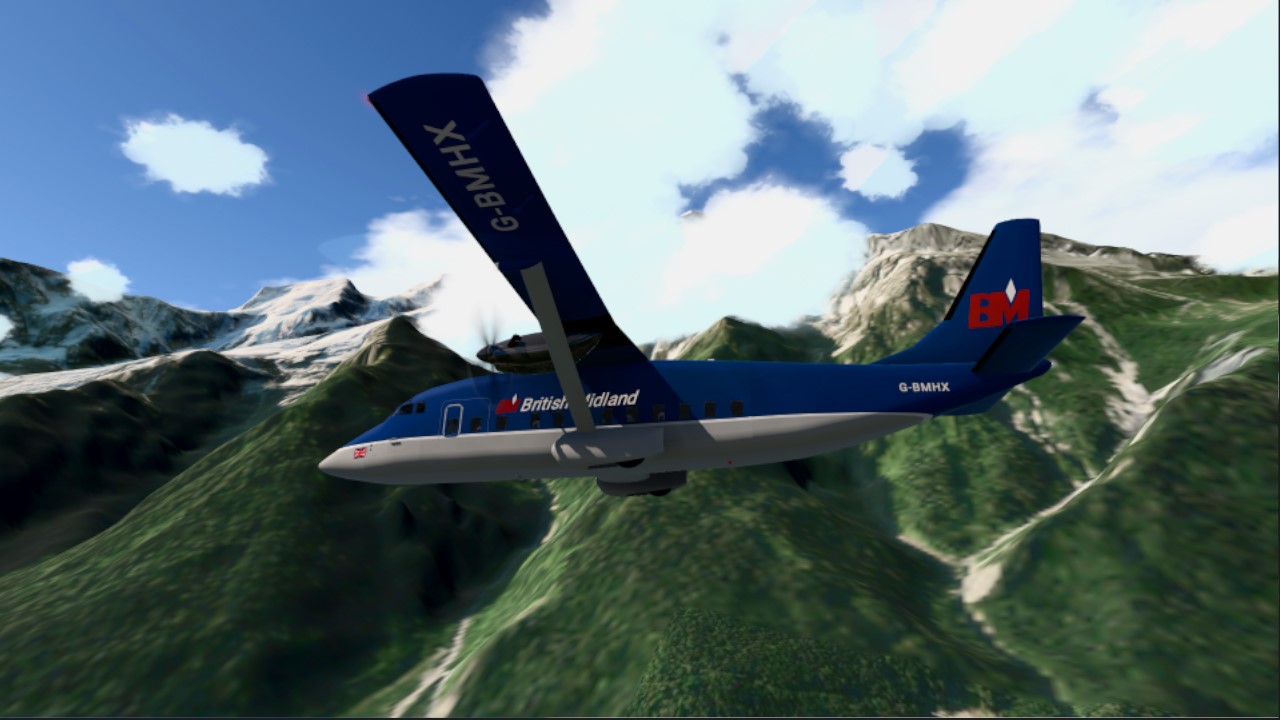
Short 360
During the 1970s, the world's commuter airline market began to evolve from the 20-seat class to larger and more comfortable cabins. Short Brothers of Northern Ireland had created the Skyvan in 1962, followed by the related but larger Short 330 in 1974. The Short 360 development was announced in 1980, with the prototype's first flight on 1 June 1981 and type certification awarded on 3 September 1981.
The first production Short 360 had its maiden flight on 19 August 1982 and entered service with Suburban Airlines (later merged with Allegheny Airlines/US Airways) in November 1982.
After initiating production with the basic model, Short marketed a number of 360 developments. First was the 360 Advanced, in late 1985, with 1,424 shp (1,062 kW) PT6A-65-AR engines. That was followed by the 360/300, in March 1987, with six-blade propellers, more powerful PT6A-67R engines, and aerodynamic improvements, giving a higher cruise speed and improved "hot and high" performance. The 360/300 was also built in 360/300F freighter configuration.
Production of the 360 ceased in 1991 after 165 deliveries.
The Short 360 is a 36-seat derivative of the 30–33 seat Short 330. In high density configuration, 39 passengers could be carried. The two Short airliners have a high degree of commonality and are very close in overall dimensions. The later 360 is easily identified by a larger, swept tail unit mounted on a revised rear fuselage. The 360 has a 3'0" (91 cm) fuselage "plug" which gave sufficient additional length for two more seat rows (six more passengers), while the extra length smoothed out the aerodynamic profile and reduced drag.[1] Seating is arranged with two seats on the starboard side of the cabin and one seat on the port side. The 360's power is supplied by two Pratt & Whitney PT6A-65Rs.
Building on the strengths and reputation of its 330 antecedent, the 360s found a niche in regional airline use worldwide, being able to operate comfortably from 4,500 ft (1,400 m) runways – opening up hundreds of airfields that would otherwise be inaccessible to airliners. With a cruise speed about 215 mph (370 km/h), at an altitude of 10,000 ft (3,048 m), the unpressurized 360 was not the fastest turboprop in its market but it offered acceptable performance at a reasonable price combined with ease of service and maintainability. The PT6A turboprops are fully ICAO Stage 3 noise-compliant, making the 360 one of the quietest turboprop aircraft operating today.
Real Sample



Controls:
Takeoff Speed: 126kts - 135kts
Landing Speed: 137kts - 120kts (with full flaps)
Stall Speed: 95kts (with full flaps and trim)
Trim = Trim
VTOL = Flaps
AG.1 = Door
(Cockpit partly functional)
How To Start Engine and Turn on Lights

Have a Nice Flight and Fly Safe !
Specifications
Spotlights
- Tang0five 2.7 years ago
General Characteristics
- Successors 2 airplane(s) +63 bonus
- Created On Windows
- Wingspan 73.6ft (22.4m)
- Length 71.3ft (21.7m)
- Height 25.0ft (7.6m)
- Empty Weight 15,258lbs (6,921kg)
- Loaded Weight 19,126lbs (8,675kg)
Performance
- Horse Power/Weight Ratio 0.074
- Wing Loading 26.9lbs/ft2 (131.2kg/m2)
- Wing Area 711.7ft2 (66.1m2)
- Drag Points 3149
Parts
- Number of Parts 945
- Control Surfaces 7
- Performance Cost 3,559







@CL125 Thai airways
@JacksEpicGamingYT what logo ??
Bloomin marvellous! Great nostalgic livery, brings me back to being a kid watching these take off.
It’s beautiful and I love it I really liked the buttons for the start-up great job!
The aircraft is beautiful. The boxy-ness still throws me off to this date as a side view still absolutely resembles a cardboard cutout of a more round aircraft lol.